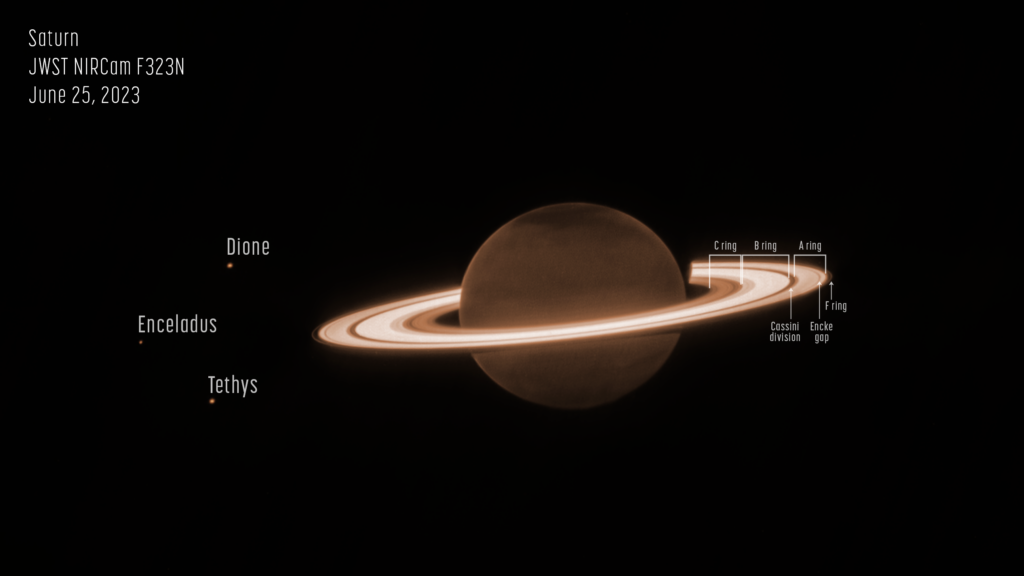NASA has published an infrared portrait of Saturn obtained by the James Webb Space Telescope (JWST). On it you can see the planet, its rings, as well as some moons.

Despite the fact that the main task of JWST is to conduct cosmological research, astronomers also actively use it to study objects located in our Solar System. During its operation, JWST has already managed to obtain images of Jupiter, Neptune and Uranus. On June 25, it completed a “photo shoot” of the giant planets, taking pictures of Saturn.
The images of Saturn were taken using the NIRCam near-infrared camera. The planet seems very dark due to that methane in its atmosphere absorbs almost all the sunlight. Mostly consisting of water ice rings, on the contrary, reflect light very well, and that’s why they turn out so bright.
The JWST images clearly show the details of the planet’s ring system, as well as several of its moons — Dione, Enceladus and Tethys. You can pay attention to the difference in brightness between the northern and southern hemispheres of Saturn. Presumably, this is due to the difference in seasons. It is summer in the northern hemisphere, which may explain the very dark color of the north pole.

The edges of the planet’s disk look light, which may be caused by high-altitude fluorescence of methane, emission of a trihydrogen ion in the ionosphere, or both processes. Spotting in the northern hemisphere may be associated with large-scale planetary waves in the stratosphere. JWST has previously observed similar structures on Jupiter.
In the future, astronomers plan to conduct additional observations of Saturn, including in the mid-infrared range. They will allow exploring the fainter rings of the planet (including the thin G ring and the scattered E ring), which are not visible in the NIRCam image. They also hope that JWST will be able to detect small moons of Saturn, which previously escaped the gaze of other researchers. Such findings will help to form a more complete picture of the current state of the Saturn system, as well as its past.
Recall that recently JWST helped astronomers determine the time of the remaining life of Saturn’s rings.
According to https://blogs.nasa.gov
Follow us on Twitter to get the most interesting space news in time
https://twitter.com/ust_magazine
